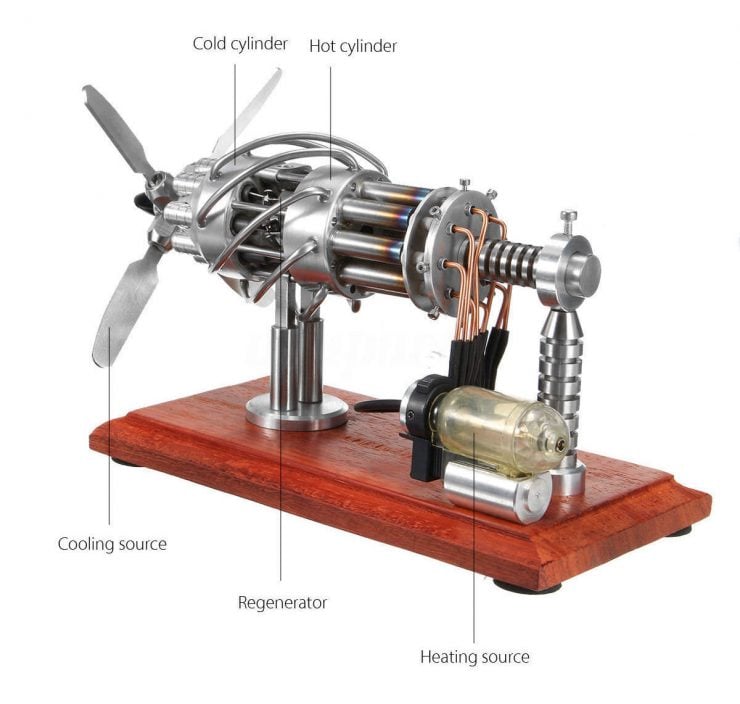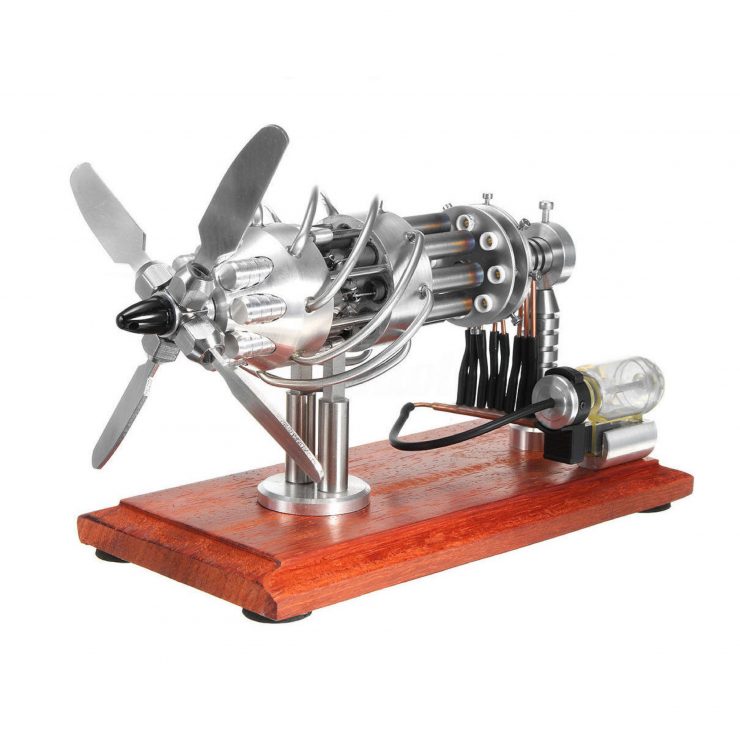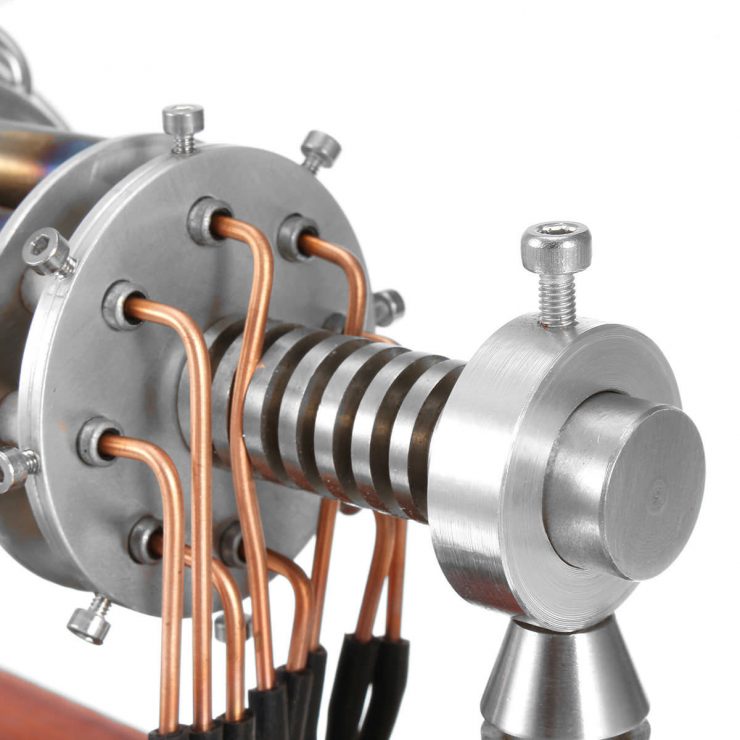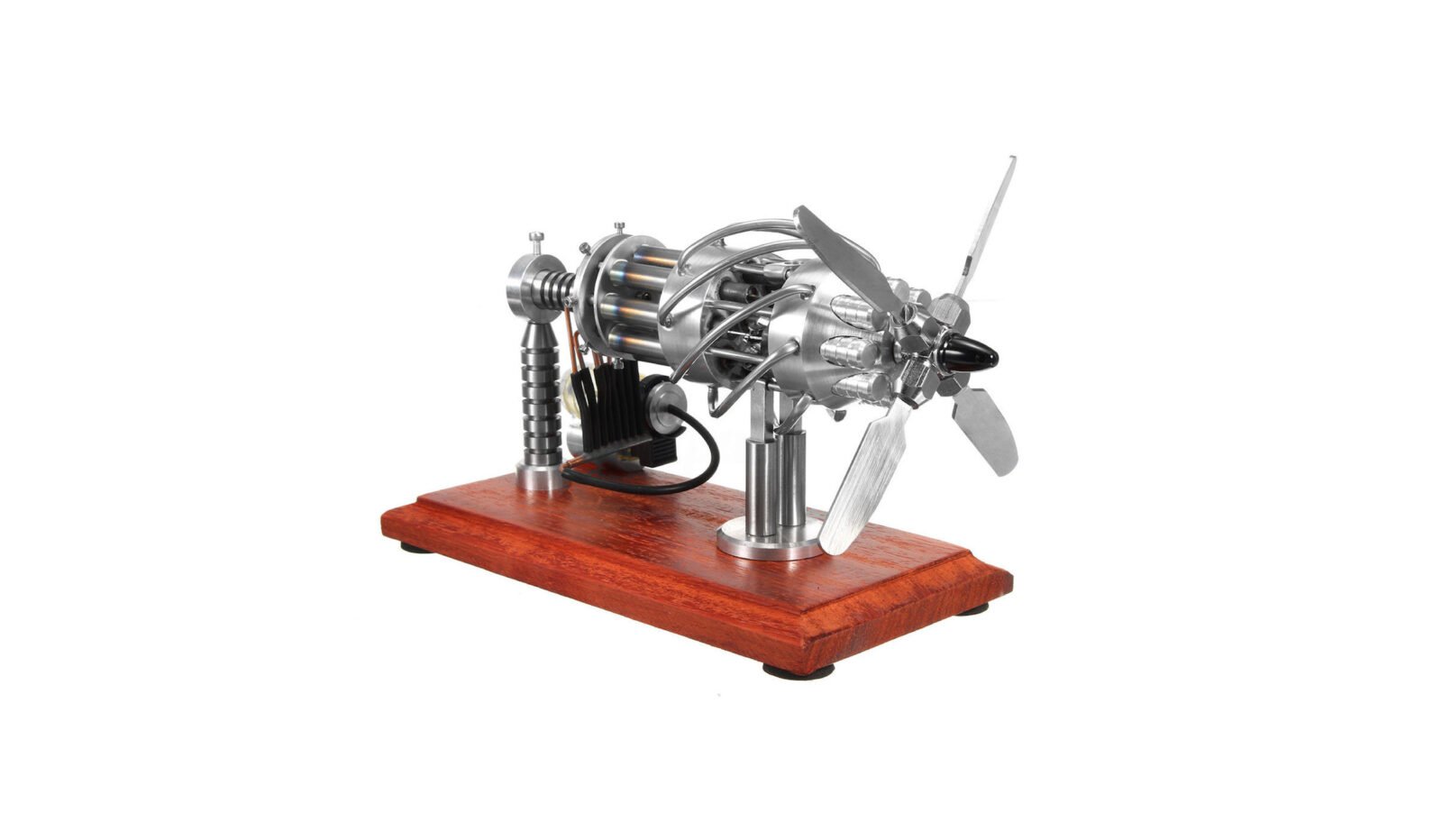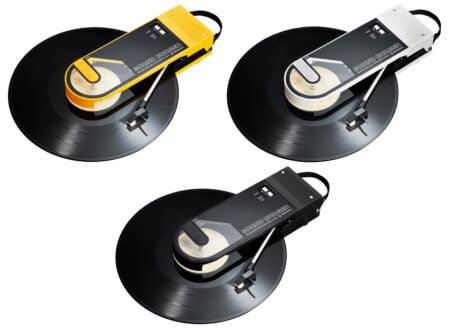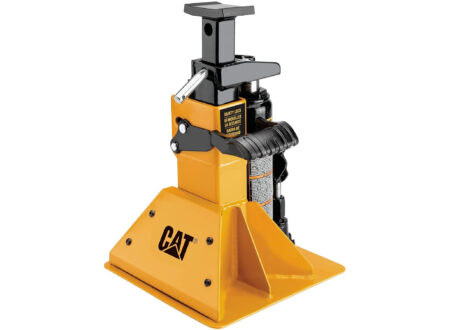This 16-cylinder stirling engine is a fully-functioning model capable of speeds of almost 2,000 rpm. It’s powered by burning butane (lighter gas), there’s a small clear cylinder at the rear of the engine that feeds gas through copper pipes up to the 8 bases of the rear “hot” cylinders.
Stirling Engines
Stirling engines are remarkably simple, they were originally patented in 1816 as a safe method of converting heat energy into mechanical work without any of the risks associated with steam engines – mostly the danger of boiler explosions, a common occurrence in the 1800s.

Originally invented by Robert Stirling with input from his brother James, their’s was a newer and more advanced version of the hot air engine that had existed since at least 1699. The real genius of the Stirling-designed engine was the use of a closed loop utilizing two cylinders with a “regenerator” between them, they called this the Alpha-type Stirling engine.
The benefit of the Stirling engine is its simplicity and ease of use, they’ve been used in innumerable industrial applications of the centuries including water pumps, mills, and factory machinery. In more recent years NASA has been looking into nuclear-decay heated Stirling Engines as a power source on extended missions to the outer fringes of our Solar System.
The 16-Cylinder Stirling Engine Shown Here
The 16-cylinder Stirling engine you see here is a little more complex than most, it has 8 heat cylinders at the rear with 8 cooling cylinders at the front – these have additional cooling provided by the propeller.
You can see the regenerator tubes in the center, these are the curved metal tubes that connect the bases of the hot cylinders to the bases of the cool cylinders, transferring hot air in one direction, then cool air back again.
This desk-based model is largely made from aluminum alloy to ensure a long life, it has a solid wooden base to keep it firmly planted even when operating at full speed, and you can refill the butane via a small input valve on the rear of the cylinder (similar to a lighter).
In order to start the engine you just need to fill the gas, open the valve, light the burners, and then start the propeller spinning by hand once the engine has had 30 seconds to pre-heat. The model measures in at 21.5cm x 10cm x 16.5cm.
